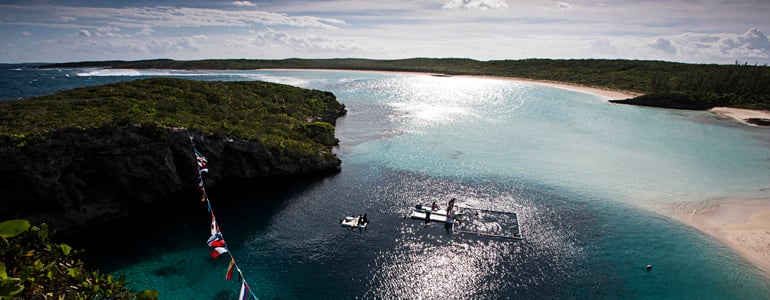

Suunto Blog

BENEFITS FOR USING TRAININGPEAKS WITH YOUR SUUNTO
Suunto became compatible with TrainingPeaks this spring. We got in touch with Canadian ultra runner Rodney Buike to learn more about the service.
Rodney Buike started his athletic career as an alpine ski racer and a mountain biker but has since evolved into an endurance athlete covering longer and longer distances. First he competed in duathlons and triathlons, but has recently started to run ultras, too.
Buike has been using TrainingPeaks as his main tracking application since 2011.
“I initially started with the free version of TrainingPeaks but soon switched to TrainingPeaks Premium for some of the added capabilities,” says Buike.
“For me the best feature is the Performance Management Chart. It gives me a real ability to manage my fitness and fatigue levels over the course of my racing season.”
TrainingPeaks’ Performance Management Chart (PMC) tracks chronic training load (CTL based on activities older than 15 days) and acute training load (ATL based on the last 14 days of activity). These numbers are based on the athlete’s thresholds which allows TrainingPeaks to calculate the intensity (IF) and Training Stress Score (TSS). This is then used to calculate Training Stress Balance (TSB). All this data can be used to monitor progress and ensure a smooth steady build up and then taper to main race or races.
Here’s Buike’s own PMC starting with the beginning of training for his first 50K race.
Rodney Buike’s 180-day Performance Management Chart
“The first vertical red line is the peak of training with the longest run before tapering began for the race (the next vertical red line). Then you can see the recovery period and the final vertical red line indicating when training began again,” Buike explains.
“There are a few important things you can see in this graph: First off you can see a long slow steady build with the gradual increase in the CTL (the blue line). There are smaller spikes along the line, which individually identify the key long runs followed by short recovery periods – but an overall steady climb. The TSB (orange line) moves into the positive as I recover and taper for the race while the ATL drops as training load is decreased.”
Over the course of time the Performance Management Chart can help you plan your taper and recovery to ensure you are doing just enough to maintain fitness while recovering properly to ensure your best performance on race day.
SET YOUR ZONES FIRST
While this all sounds very complex there are a few very basic things that all athletes can take advantage of immediately.
“The first thing I recommend is to set your zones. If you are using HR based training you can set different zones for all activities. For specific activities you can also define additional zones. I highly suggest runners to set their pace zones, which can be done using the results of a recent 10KM running race. Cyclists, who have a power meter, can input their functional threshold power (FTP) and use that to build power zones.”
In addition to the Performance Management Chart, Buike highlights the premium version’s advanced charts that you can use to drill deeper into the data (power analysis, scatter graphs, etc.). He also finds the planning tools very useful.
“With the premium version you have the ability to plan out your upcoming week, month or longer and have that sync with your calendar in Outlook, Gmail, Apple iCalendar or any calendar tool that supports ICS files. When you upload activities they will automatically populate the related activity in your TrainingPeaks calendar,” says Buike.
So how does your own calendar look for the coming weeks?
“I have decided to move into the ultra running world and completed my first 50 km and 80 km races recently. In May I have a 130km race coming up.”

Tutorial Tuesday: Customize your Ambit’s shortcut button
Do you have a favorite Ambit feature that you wish you could access quicker? No worries, in time mode you can access any menu item with a single push of a button after you have taught your Ambit2 or Ambit3 what you wish the shortcut button will do.
The shortcut button comes in handy in many ways. For example, it is a quick way to set the wake-up alarm and travellers can use the shortcut to easily set the dual time to match the destination’s time zone. And for your most frequent activity the shortcut button can lead straight to the right sport mode setting you ready to go with a single push of a button.
Here's how to use your Ambit's shortcut.
DEFINE A SHORTCUT
By default, when you keep [View] pressed in TIME mode, you toggle the display between light and dark. This shortcut can be changed to a different menu item.
To define a shortcut:
1. Keep [Next] pressed to enter the options menu or press [Start Stop] to enter the start menu.2. Browse to the menu item to which you want to create a shortcut. 3. Keep [View] pressed to create the shortcut.
Your own shortcut works when the watch is in time mode. In other modes, keeping [View] pressed accesses predefined shortcuts. For example, when the compass is active, you can access the compass settings by keeping [View] pressed.
NOTE: Shortcuts cannot be created to all possible menu items, such as individual logs.
You can get support for your Suunto product at support

Suunto Vertical Blue: Day 6
Suunto Vertical Blue has now come to an end. It's been an incredible nine days of freediving action with some world class performances from many athletes from around the world. But it hasn't all been about depth records. In this clip, competitors come together for a a day of alternative games that include underwater somersaults, bubble rings and an 'ironfish' contest in which divers jumped off a cliff before swimming underwater to the center of Dean's Blue Hole and then diving to 20 m.
The full report will come soon. But in the meantime, enjoy the clip below.

Vertical Blue: Day 5 highlights clip
Here's another take on a dramatic day 5 at the Suunto Vertical Blue. Although the main focus of the day was the world record attempt of Will Trubridge, this clip shines the spotlight on some of the other athletic performances at Dean's Blue Hole.

What's your adventure?
Adventures take us to new experiences and out of the everyday. Kilian Jornet says that exploring is human; Greg Hill that adventure is a mindset.
Watch the Suunto Adventure video and hear what Kilian Jornet, Greg Hill, Jill Heinerth and Conrad Stoltz think of adventure.
Top image: © Bruno Long

Meet the Ambit3 Sport Sapphire star Sandra Koblmüller
Sandra Koblmüller is the star of our recent Suunto Ambit3 Sport Sapphire shoot and you'll see her in the current campaign. But the 24-year-old is also an athlete in her own right and recently competed in the XTERRA world championships in Maui, the premier off-road triathlon, where she came 14th. Amazingly she only started swimming a few years ago. So how did she do it?
How did you get to become a pro triathlete? In secondary school our class took part in a cross-country running competition. Without any serious training I came second and my passion for running was born. I started to regularly take part in running competitions. When I went to university a colleague asked me to do the running part in a triathlon relay. I was so impressed from the combination of the three disciplines that I wanted to try a whole triathlon on my own and started to train for swimming. And then? One year later I won the Austrian Championship for Crosstriathlon and the Austrian federation sent me to the European Championships. Because of this, I was allowed to become a professional athlete this year. In my first year as a “pro“ I came second at the XTERRA Portugal, which qualifies you for the World Championship in Maui (Hawaii).
Tell us about your training routine?Normally I wake up at 6 o’clock in the morning. After a short breakfast I usually start my day in the swimming pool with a 3-5 km swim. I am not always motivated to jump into the cold water in the morning, but after some lanes I get my motivation and enjoy it.
After the swim I take a second breakfast and do something for university then at noon or in the evening I usually do my second workout – either I go for a run or I ride my bike. At the weekend I normally do some longer bike workouts (about 4 hours). Then Monday is my rest day, where I do relaxing things like sauna, massages, stretching…How do you monitor your progress? I have my own trainer and I usually get a training plan for a week. With the help of the Suunto Ambit3 Sport Sapphire we are able to control my training. Are there any areas of your training that you are struggling with?As I started stroke swimming very late at the age of 20, my swimming technique is not the best. If you want to be a good swimmer/triathlete you have to start swimming in your childhood to get the water feeling. However I’m working hard to improve this.
What are your dreams and goals?One of my biggest goals is to become one of the best XTERRA athletes in the world. A goal in the near future is a victory in one of the XTERRA World Tour races. What inspires and motivates you? One thing that inspires me is the improvement you make if you train hard for your goals. For example, when I started to swim, it took me about 1:45 for the 100 meters intervals (10 x 100m intervals of swimming). Now I am able to swim the 100m in 1:25 and I am sure that one day I will swim my 100m intervals under 1:20.What are your fears?I have a fear of failure, especially just before a competition. So the most important thing I have to learn is to believe in my strengths and myself.





























































